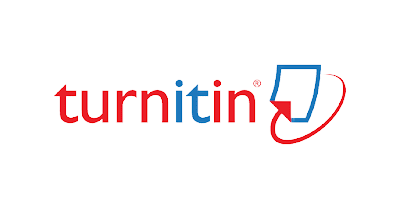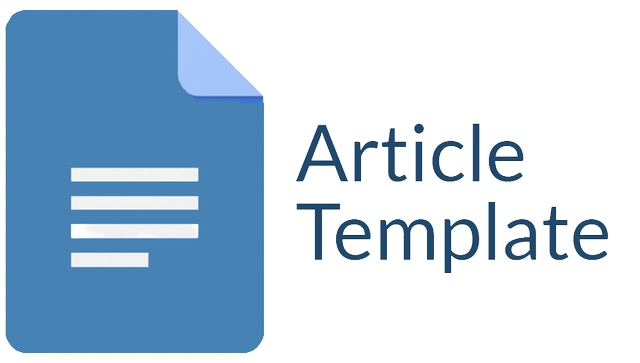FORMULATION DRINK HEALTH MATERIAL BASE OF BUTTERFLY PEA FLOWER (Clitoria ternatea L.) AND BUSINESS DESIGN INNOVATION
Abstract
The COVID-19 pandemic has increased the use of herbal supplements, creating opportunities for developing butterfly pea flower (Clitoria ternatea L.) as a health beverage. This study aimed to formulate a stable, preferred product and design its business scheme. Four formulations with 2 grams of butterfly pea flower, varying amounts of mint leaves (0.8 g or 0.5 g) and lemon (0.35 g or 0.5 g) were tested. A hedonic test with 20 semi-trained panelists determined the most preferred formula. The selected formula underwent moisture content analysis using the thermogravimetric method at 105°C. Shelf life was evaluated with the ASLT Arrhenius model at 25°C, 35°C, and 45°C over 20 days, assessing moisture content, organoleptic properties, and pH. Microbial contamination, including Total Plate Count (ALT) and Yeast and Mold Count (AKK), as well as heavy metal levels (As, Hg, Cd, Pb) using AAS, were also examined. Results showed Formula 2 as the most preferred, with 8.13% moisture content and a shelf life of 6.9 months at 25°C in sealed packaging. Aroma was the most affected parameter during storage. Microbial analysis recorded ALT at 3×10³ CFU/g and AKK at 5×10² CFU/g. Heavy metal content met BPOM and SNI standards. Thus, Formula 2 was identified as the best formulation for commercial development.
Downloads
References
Aghdam, M. S., Fathi, M., & Rafiee, S. (2021). Application of Accelerated Shelf Life Testing (ASLT) using Arrhenius model for estimation of beverage shelf-life. Food Control, 130, 108343. https://doi.org/10.1016/j.foodcont.2021.108343
BPOM. (2014). Peraturan Ka BPOM no. 12 tahun 2014 tentang persyaratan mutu obat tradisional.
Cording, J. (2024). The Rise of Functional Beverages Among Millennials and Gen Z. Forbes. https://www.forbes.com/sites/jesscording/2024/04/13/the-rise-of-functional-beverages-among-millennials-and-gen-z/
Hagen, L. (2021). Pretty healthy food: How and when aesthetics enhance perceived healthiness. Journal of Marketing, 85(2), 129–145.
Kaur, R., Shekhar, S., & Prasad, K. (2024). Functional beverages: recent trends and prospects as potential meal replacers. Food Materials Research, 4, 6. https://doi.org/10.48130/fmr-0023-0041
Kong, Z., Zhan, Y., Liu, Y., & Song, J. (2023). Phytochemical characterization and health-promoting properties of Clitoria ternatea L. flower: A review. Plants, 12(2), 273. https://doi.org/10.3390/plants12020273
Kusuma, J. W., Maliki, B. I., & Fatoni, M. (2020). Peran Pendidikan Dalam Menyiapkan Bisnis Tradisional Memasuki Era Digital. EDUSAINTEK: Jurnal Pendidikan, Sains Dan Teknologi, 7(1), 39 – 53. https://doi.org/10.47668/edusaintek.v7i1.57
Maghfirah, A., & Suranto, B. (2023). Evaluasi Adopsi Metode Agile Untuk Proses Perangkat Lunak Oleh Tim Startup Di Indonesia. EDUSAINTEK: Jurnal Pendidikan, Sains Dan Teknologi, 11(2), 570 – 587. https://doi.org/10.47668/edusaintek.v11i2.1062
Mukherjee, P. K., Kumar, V., Kumar, N. S., & Heinrich, M. (2008). The Ayurvedic medicine Clitoria ternatea—From traditional use to scientific assessment. Journal of Ethnopharmacology, 120(3), 291–301. https://doi.org/10.1016/j.jep.2008.09.009
Natarajan, T., G. R., J., & Jayapal, J. (2022). Consumption of Branded Functional Beverages Post-COVID Pandemic: An Empirical Investigation in a Developing Economy Using Behavioral Change Models. Journal of Food Products Marketing, 28(3), 132–151. https://doi.org/10.1080/10454446.2022.2058900
Putra, I. N. K. (2020). Substansi Nutrasetikal Sumber dan Manfaat Kesehatan. Deepublish.
Research, & Markets. (2024). Functional Beverages Market by Type, Ingredients, and Region - Global Forecast to. https://www.researchandmarkets.com/reports/functional-beverages-market
Wardana, A. P., Cahyaningrum, S. E., Sidiq, M. N., Purnamasari, A. P., Muhaimin, F. I., & Ilham, B. (2024). The Miracle of Herbal Infusion Honey. Uwais Inspirasi Indonesia.
Copyright (c) 2025 Tarra Syabriena, Esti Mumpuni, Esti Mulatsari

This work is licensed under a Creative Commons Attribution-ShareAlike 4.0 International License.
Jurnal allows anyone to compose, correct, and do derivative works, even for commercial purposes, as long as they credit for the original work. This license is the freest. It is recommended for maximum distribution and use of licensed material.
The submitted paper is assumed not to contain any proprietary materials that are not protected by patent rights or patent applications; The responsibility for technical content and protection of proprietary materials rests with the authors and their organizations and not the responsibility of journal or its editorial staff. The primary (first/appropriate) author is responsible for ensuring that the article has been viewed and approved by all other authors. The author's responsibility is to obtain all necessary copyright waivers to use any copyrighted material in the manuscript before submission.
Jurnal Pendidikan, Sains dan Teknologi allows the author(s) to hold the copyright without restrictions and allow the author(s) to retain publishing rights without restrictions. Jurnal Pendidikan, Sains dan Teknologi CC-BY-SA or an equivalent license as the optimal license for the publication, distribution, use, and reuse of scholarly work. Jurnal Pendidikan, Sains dan Teknologi allows the author(s) to hold the copyright without restrictions and allow the author(s) to retain publishing rights without restrictions. Jurnal Pendidikan, Sains dan Teknologi CC-BY-SA or an equivalent license as the optimal license for the publication, distribution, use, and reuse of scholarly work.
In developing strategy and setting priorities Jurnal Pendidikan, Sains dan Teknologi recognize that free access is better than priced access, libre access is better than free access, and libre under CC-BY-SA or the equivalent is better than libre under more restrictive open licenses. We should achieve what we can when we can. We should not delay achieving free in order to achieve libre, and we should not stop with free when we can achieve libre.
Jurnal Pendidikan, Sains dan Teknologi is licensed under a Creative Commons Attribution-ShareAlike 4.0 International License.
You are free to:
- Share a copy and redistribute the material in any medium or format
- Adapt a remix, transform, and build upon the material for any purpose, even commercially.
- The licensor cannot revoke these freedoms as long as you follow the license terms.






